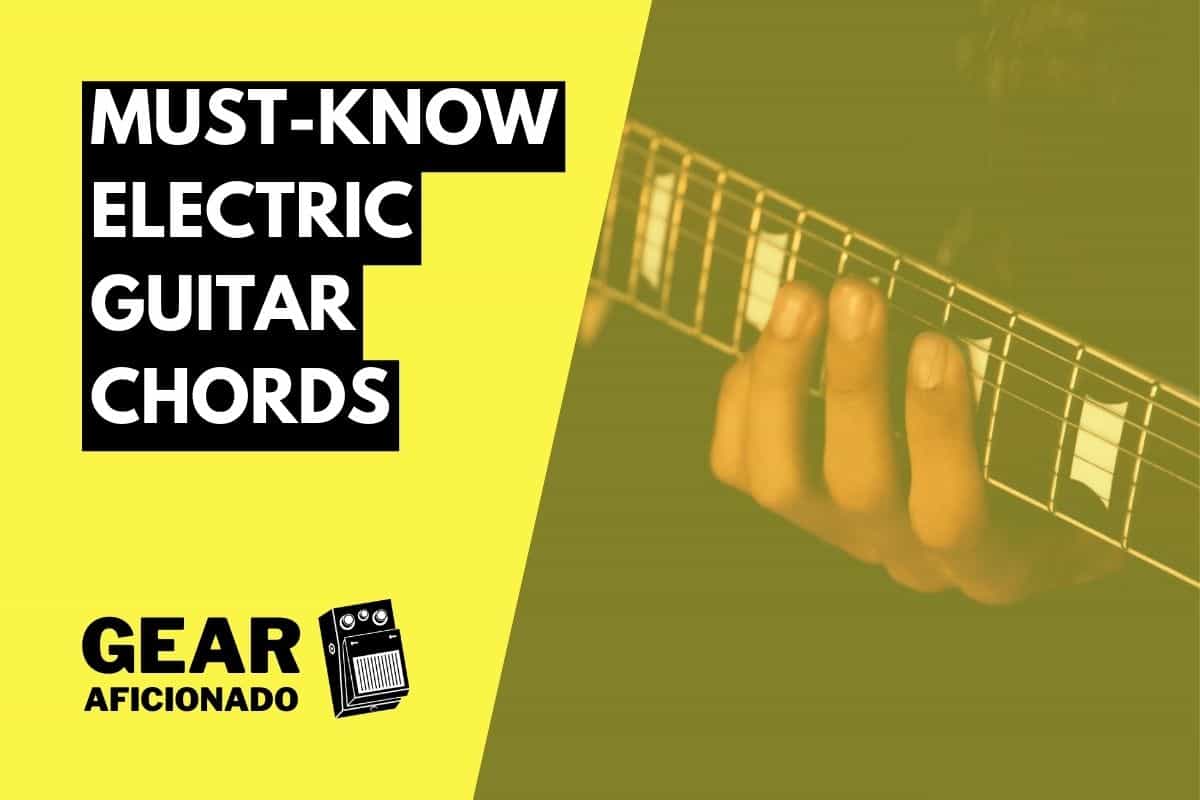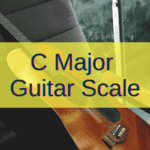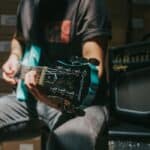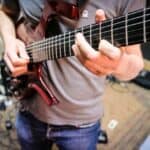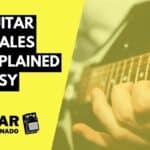Before we dive right into the chords (of which there are plenty and for every musical taste), we have to clear up one important matter.
Electric guitar chords and acoustic guitar chords are exactly the same.
This is because the fretboard, number of strings, and possibilities are the same in these instruments.
They’re just different incarnations of the same concept.
That being said, we’ll see the guitar chords that sound best on the electric guitar.
Yes, some chords require a distinct tone or can make a guitar sound huge when accompanied by distortion, for example.
We’ll focus on these chords that will make your bandmates, fans, and friends turn their heads to your new playing skills.
Are you ready for this condensed lesson on the best chords to elevate your electric guitar playing?
Go get your gleaming electrical ax and let’s get to it!
Power Chords
Let’s begin with some of the most common electric guitar chords you’ll ever come across.
Yes, it is safe to say that entire musical styles or genres were built around these chords. Indeed, if you’re into punk rock, metal, hardcore, or any other heavily-distorted musical style, you’ll very likely come across these chords.
But what makes them so appealing?
Well, they are also called 5ths because they’re composed of only two notes: the tonic and the 5th.
Yes, whereas most guitar chords have at least 3 notes (usually the tonic, 3rd, and 5th) these chords only utilize two notes.
If you play them with an acoustic guitar, they will sound alright but not great.
If you play them with a clean electric guitar, you’ll get a similar result as you do with the acoustic.
The real fun starts when you play these chords and step on the distortion pedal.
At that moment, the guitar tone becomes a monster from a parallel reality taking over the entire song.
They’re not called power chords by chance, you know?
But let’s get to it with three examples in the form of diagrams.
Bear in mind that you have to make an effort and mute all the non-played strings.
The cleaner you get these chords with distortion, the more powerful they will be.



As you can clearly see in the examples above these chords need either one or two fingers to be played.
If you pay close attention to this video by punk rock legends Green Day, you’ll notice that every chord Billy Joe Armstrong plays requires only two fingers and he’s muting every other string.
Yes, he’s playing power chords as he did his entire career.
Octaves
Other great chords you can play with your electric guitar that are good to make some arrangements or even go into “soloing mode” are octaves.
If you play them on an acoustic, they can be nice-sounding and also on an electric with a clean tone. But when they really get their full dimension is with distortion.
But how do you play octaves on an electric?
Well, you’ll need the same two fingers you used for the power chords but on different strings.
You’re going to play the tonic and the octave muting the string between them.
This means you’ll essentially be repeating the same note twice by playing it one octave above.
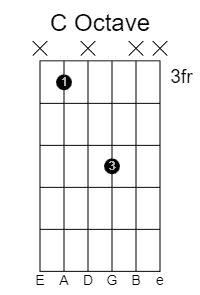

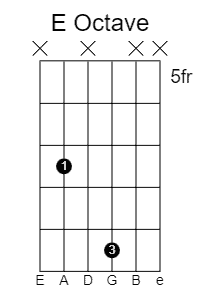
As you can see, just like it happened with power chords, you need to mute every other string and simply move the same structure up and down the neck to find the desired tone.
We’ll go to a Green Day tune again to show this technique in action.
Pay close attention to the beginning of the solo (at 3:05) and see how powerful it becomes when the guitarist only plays the same note in two different octaves.
Fatter Power Chords with an added Octave
I don’t know if you realized this, but the octave is physically just beneath the fifth on your fretboard.
What if you could play them together?
Well, that is a trick most of us rock and rollers have been using (and abusing) for decades.
Yes, since you’ll only be adding a repeated note, you won’t change the characteristic or power of the original chord; you’ll be adding more tone to it.
Let me propose a little exercise here.
Play these chords one after the other and try to see the difference in tone on both occasions.
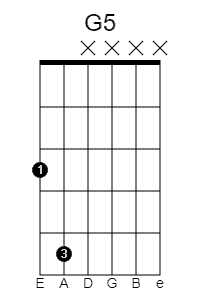
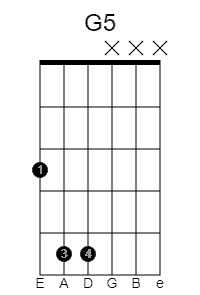
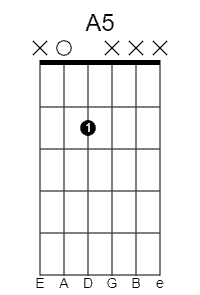
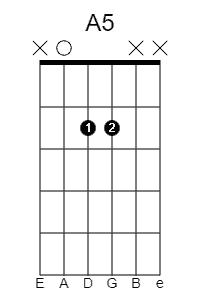
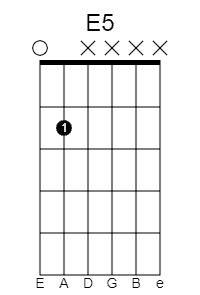
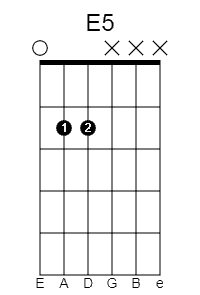
Yes, I know; you’re more than welcome.
Power Chord Add9
Let’s add a little more to the same concept above because the octave is just beneath the fifth and together with it, it sounds amazing and full.
But what if I could show you a chord that sounds even bigger?
Moreover, the chord I’m about to show you works played with an arpeggio on an acoustic or a clean electric and it also works perfectly with distortion making every statement meaner, dirtier, nastier, and heavier.
How do you achieve such a powerful chord?
Well, all you need is to use the same structure you did above and add to it a ninth instead of an octave.
In other words, you have to move your pinky a full tone toward the bridge of the guitar.
But, before we go to the chord diagrams, it is safe to say that it is the kind of chord that makes beautiful songs like “Every Breath You Take” even more beautiful.
Here’s a great video of the man himself, Mr. Sting playing it on acoustic guitar. Pay close attention to the way that Sting stretches his fingers to reach that 9th with the pinky while playing the song’s verse.
Well, if you add distortion to that same chord, you’ll find that it becomes a monster chord capable of bringing chaos and mayhem to any stage.
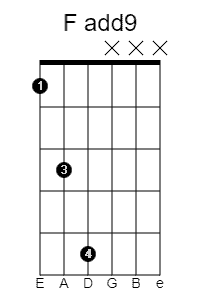
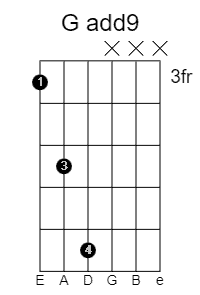
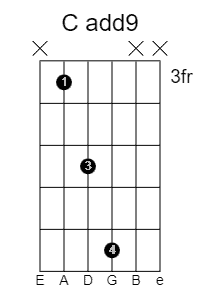
The Secret Hidden in Your Fretboard!
Another reason why power chords and octaves are so popular is that you can play any chord you want as long as you move the same structure throughout the neck.
Yes, all you need to know is where the tonic of the chord is and you can easily construct it.
So, let me give you a personal gift in the shape of a chart that will help you find your way on the fretboard and play as many power chords, octaves, and power chords add9 you want effortlessly.
| Fret | 1 | 2 | 3 | 4 | 5 | 6 | 7 | 8 | 9 | 10 | 11 | 12 |
| 6th String E | F | F# | G | G# | A | A# | B | C | C# | D | D# | E |
| 5th String A | A# | B | C | C# | D | D# | E | F | F# | G | G# | A |
Yeah, I know; you’re welcome again!
PRO TIP: Power chords, octaves, and add9 power chords aren’t either major or minor because they have no 3rd in their structure. Therefore, you can use it over major and minor chord progressions alike.
Some Cool Funky Chords
Now that we’ve made some heavy statements, let’s make some funky music!
Yes, the electric guitar isn’t just about distortion and headbanging, it can also set a dance floor on fire.
Let’s get started with another, funkier version of the 9th chord.
This guitar chord is so versatile you can play it in a Nü Metal project, a band like The Police, and a James Brown tune.
When playing it in a funk environment it requires your guitar to be pristine clean, even with some compression.
As you’ll see, the chord we’ll see in a minute will be a 9th chord instead of an add9 chord.
The difference is that with the ones we saw above, we’re adding a 9th to a power chord but not using the 3rd or the 7th.
Basically, we’re skipping all the other notes to get there. Here, we’ll have the full chord sounding.
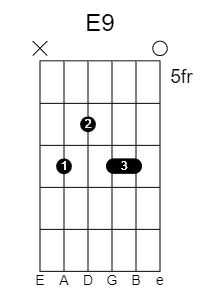
Another great set of chords to play the funk are seventh chords.
So, what we’re going to see right now is a shape to play the seventh version of that E major chord in a very similar spot so you can play them together and get a flavor of the way they sound.
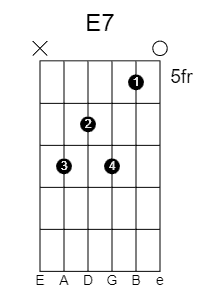
What about major and minor chords in funk?
Well, as you might know, funk is a musical style that works perfectly well with small guitar chords and big bass lines.
Therefore, we’re going to see a version of the major and minor chords that’s great to play in this musical style.

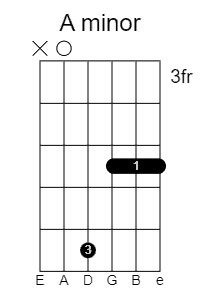
The Bottom End
Playing chords on the electric guitar is a great way to find new flavors to add to your music.
These are just a handful of the millions of chords available on guitar.
So, get familiar with the shapes, the names, and the positions and you’ll very likely up your electric game drastically.
Next time you meet your fellow guitar-playing friends, they will be amazed at the progress you’ve made in such a small amount of time.
Happy (electric) playing!

Hello there, my name is Ramiro and I’ve been playing guitar for almost 20 years. I’m obsessed with everything gear-related and I thought it might be worth sharing it. From guitars, pedals, amps, and synths to studio gear and production tips, I hope you find what I post here useful, and I’ll try my best to keep it entertaining also.

